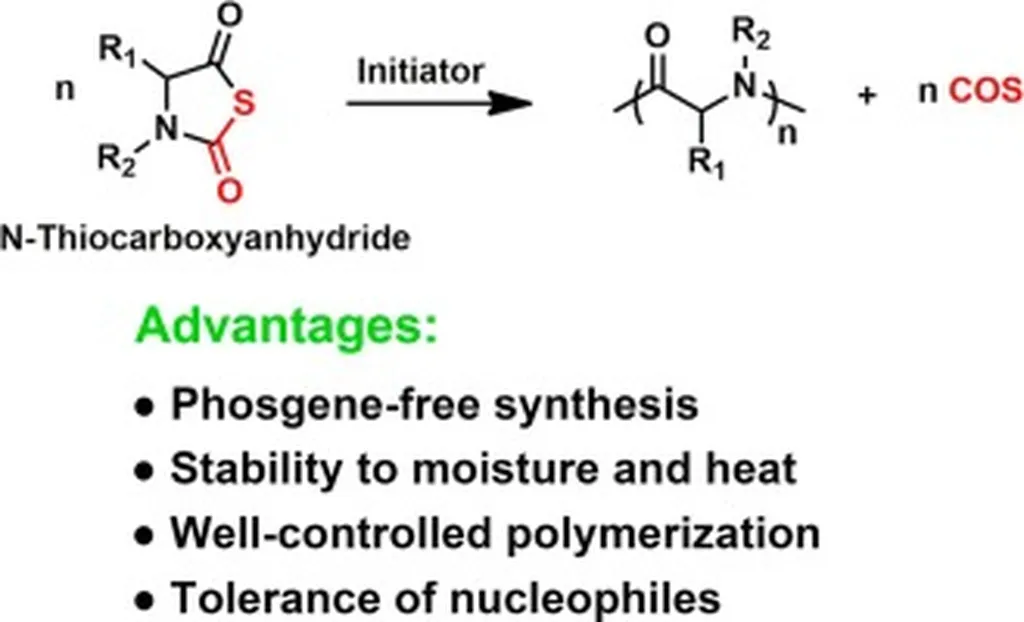In a groundbreaking development poised to reshape the landscape of biomaterials, researchers have unveiled a novel method for synthesizing poly(amino acids) using bio-renewable 2,5-diketopiperazines (2,5-DKPs). This innovation, led by Patrick A. Wall from the School of Chemistry at the University of Leeds, UK, promises to circumvent the use of toxic phosgene in monomer synthesis, opening doors to safer and more economically viable production of biodegradable polymers.
Poly(amino acids) have long been recognized for their biocompatibility, chemical functionality, and biodegradability, making them highly desirable for biomedical applications. However, their widespread use has been hampered by the toxic chemicals involved in their production. The new approach, detailed in a recent study published in *Macromolecular Materials and Engineering* (translated as “Macromolecular Materials and Engineering”), leverages 2,5-DKPs as cyclic monomers, offering a greener alternative.
“The use of 2,5-DKPs not only eliminates the need for phosgene but also taps into a renewable resource, making the process more sustainable and cost-effective,” explains Wall. This method involves using poly(ethylene glycol) methyl ether (mPEG) as a macroinitiator to produce amphiphilic block copolymers. These copolymers can self-assemble into pH-sensitive nanoparticles, capable of highly controlled, acid-actuated release of drugs like doxorubicin.
The implications of this research extend beyond the laboratory. By facilitating the safe and economical production of poly(amino acids), this method could revolutionize the development of high-value biomedical products, including materials for stimuli-responsive drug delivery. “This route to poly(amino acid) synthesis may facilitate the safe and economically viable use of key biodegradable polymers in both everyday and high-value biomedical products,” Wall notes.
The potential commercial impacts are substantial. The energy sector, in particular, stands to benefit from the development of biodegradable polymers that can be produced sustainably. As the demand for eco-friendly materials grows, this innovation could pave the way for new applications in packaging, agriculture, and even energy storage.
Moreover, the ability to recycle polymers efficiently is a critical aspect of sustainable development. The new synthesis method could contribute to a circular economy by enabling the recycling of poly(amino acids) without compromising their properties. This could lead to a significant reduction in waste and a more sustainable use of resources.
As the world grapples with the challenges of climate change and resource depletion, innovations like this offer a glimmer of hope. By combining cutting-edge science with a commitment to sustainability, researchers are not only advancing the field of biomaterials but also shaping a more sustainable future.
The study, published in *Macromolecular Materials and Engineering*, marks a significant step forward in the quest for sustainable and efficient polymer synthesis. As the research community continues to explore the potential of 2,5-DKPs, the possibilities for innovation in biomaterials and beyond are vast. This breakthrough underscores the importance of interdisciplinary collaboration and the power of scientific discovery to drive positive change.

